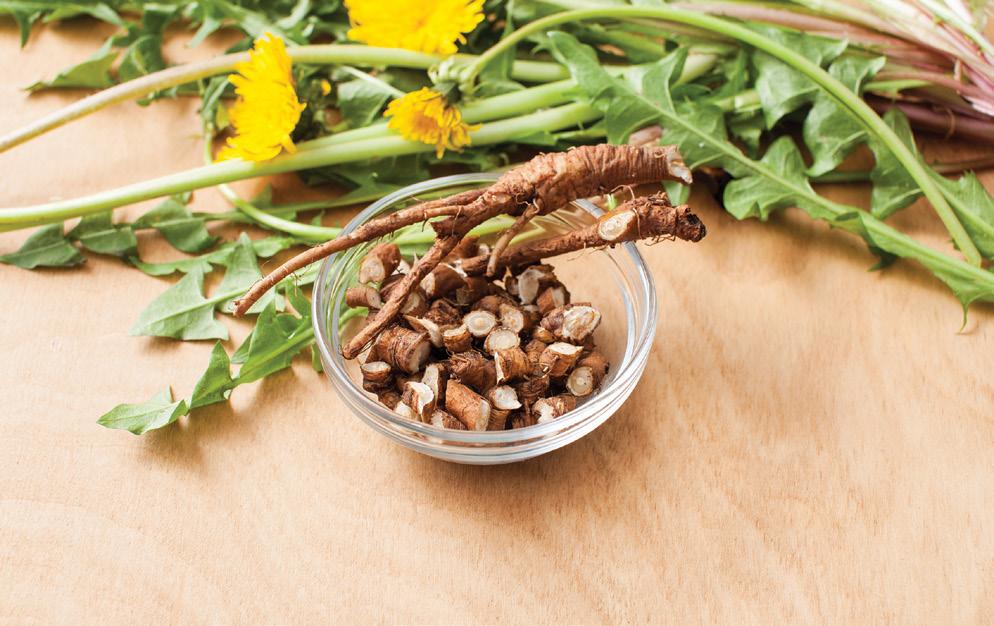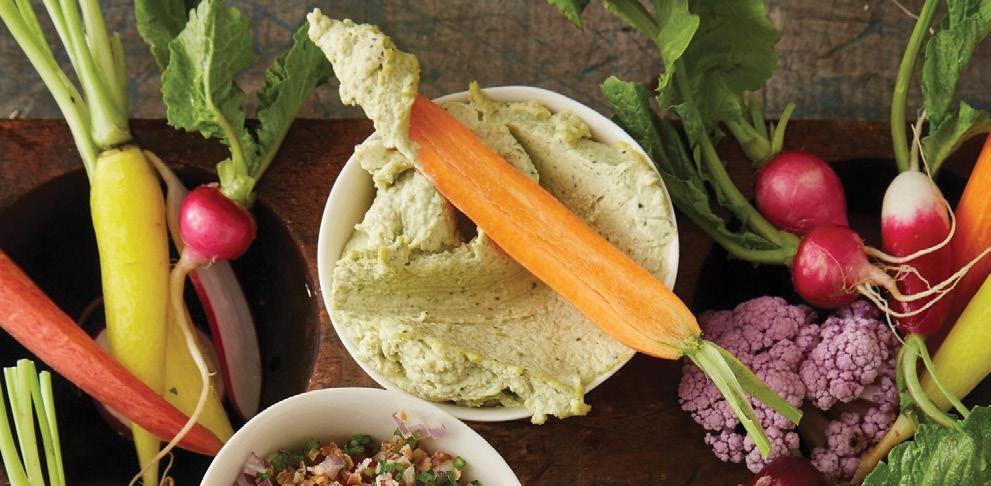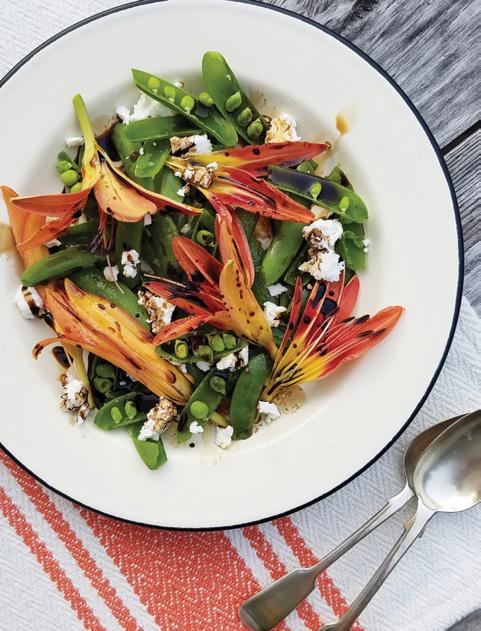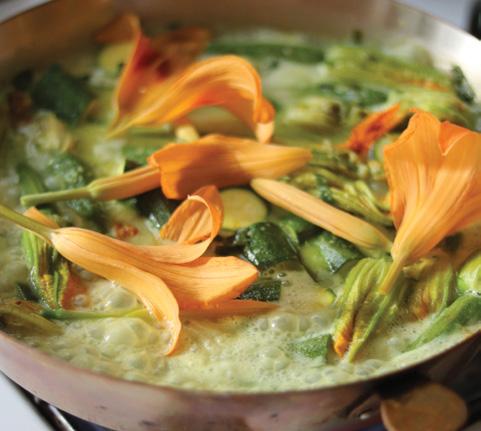
13 minute read
MUSTAFA SANTIAGO ALI
wise words
Mustafa Santiago Ali on Healing America Through Social Justice
Advertisement
by Sandra Yeyati
Mustafa Santiago what people are asking Ali has dedifor. Then we focus on getcated his career ting engaged in the civic to fighting for environprocess—voting. mental justice, public Dr. King said, “I cannot health, resource equity and pass legislation to make political empowerment to you love me, but I can pass uplift the most vulnerable legislation to stop you from communities in America. lynching me.” When we For 24 years, he served at fast forward that to today, the U.S. Environmental we can pass legislation that Protection Agency and is addresses social ills, disparcurrently vice president of ities and other egregious environmental justice, climate and commutypes of behaviors. We can also make sure nity revitalization for the National Wildlife that our organizations are representative Federation. He is a renowned public speakof what America looks like—in our hiring er and has appeared on MSNBC, CNN, practices and on our boards—and make VICE TV, Black Entertainment Television, sure that our philanthropic organizations Democracy Now! and other networks. are moving in the right direction where they are helping to fund and support folks Does the Black Lives Matter who are doing this transformative work. It movement feel different than really is a holistic set of actions. other moments in our history? Yes. This is a transformational moment. So many different types of folks are coming How do you remain hopeful in light of America’s turbulent together in large numbers, not just in our history? country, but across the planet, saying that I see many artists and entertainers who change has to happen and we have to elimare getting engaged in an effective way, inate systemic racism and discrimination. and they have the ability to reach so many They want the 21st century to look like the folks. Even more critical are the thousands 21st century, and not something from the upon thousands of incredible young lead1950s or the 1940s or even the 1960s. ers who are pushing, willing to put their bodies on the line, creating their own orgaHow can we keep the nizations and investing their time to make momentum going? real change happen. By bringing all kinds of different folks toI see people at the local and state level gether, building authentic coalitions that are changing laws that have been entrenched rooted in change, harvesting the energy of for decades. I see organizations that would this moment and making sure that the right not normally see themselves in these types types of legislation—whether at the federal, of conversations or actions saying, “You are state, county or local level—are reflective of right. I apologize for not being here sooner, but we’re going to do everything we can now to stand in solidarity with this change that’s happening.” My hope is anchored in the fact that people are already doing the work and we’re seeing fruits from the seeds that people planted sometimes hundreds of years ago, but definitely decades ago.
What kind of justice are you fighting for?
We’re fighting for housing, transportation, economic and public health justice, and of course, the environment.
I fight for communities of color. I fight for lower-wealth white communities. I fight for indigenous brothers and sisters. And I fight for the planet. I know that disproportionately, these are the communities that are often unseen and unheard, and I know if we can give voice to those communities, then it will benefit everyone. Social justice gives us the opportunity to make America whole—to be stronger and better, as we become anchored in real justice. We have to be focused on moving our most vulnerable communities from surviving to thriving.
What is your contribution to the National Wildlife Federation?
I sat down with President Collin O’Mara to have real conversations about what a 21stcentury organization and their 6 million members would look like. I thought that if I could get 10 or 20 percent of those members to embrace environmental justice and to stand in solidarity with folks, then that could help the movement and make real change happen. The National Wildlife Federation board has just approved a full environmental justice analysis of all of its programs, policies, activities and budgeting decisions. No other organization in our country does that, and it sends a clear message to all the other organizations that are out there that these are the types of things you have to do to be a 21st-century organization.
Sandra Yeyati, J.D., is a freelance writer. Reach her at SandraYeyati@gmail.com.
No-Waste Garden Edibles Ways to Maximize Your Garden’s Bounty

by April Thompson
Most gardens are loaded with delitreats. Leaving the roses to decay after the cious, nutritious food that goes first frost rather than dead-heading them uneaten and overlooked, from yields rose hips rich in vitamin C for teas edible greens like sweet potato leaves to and jams. flavorful flowers like tulips, marigolds and wisteria. Getting better acquainted with the Tip-to-Root Eating edible parts of common backyard plants Several common vegetables are edible from opens up a world of culinary possibilities. leaf to root, including broccoli, beets, chard With continued concerns around potential and radishes, says Josh Singer, a garden exposure to COVID-19, maximizing a specialist with the U.S. Department of Parks garden’s bounty while minimizing trips to and Recreation, in Washington, D.C., who the grocery store is an added benefit. teaches classes on “alternative edibles” from
“Food foraged from your backyard the garden. “One of my favorite recipes is a is fresher, tastier and cheaper than storehummus made with chard stalks in place of bought food,” says Ellen Zachos, the Santa chickpeas. It’s so creamy and delicious.” Fe author of Backyard Foraging: 65 Familiar Singer also cites borage, passionflower Plants You Didn’t Know You Could Eat. and squash flowers as favorite floral foods. “There is also the novelty factor. People “Unfortunately, it does mean making a don’t expect to be served a BBQ sauce hard choice between having beautiful made from crabapples or a curd made flowers in your garden and eating them,” with flowering quince fruit. You simply he adds. “It can also mean the plant not can’t buy those flavors.” producing fruit or vegetables, but you can
Many plants and trees commonly hand-pollinate female flowers in the case thought of as being ornamental have edible of squash and just use the male flowers for parts. Hostas are a common one that Zachos cooking. They make delicious fritters.” loves to nibble on as much as the deer do. Marie Viljoen, author of Forage, “You can harvest at a couple stages: First, Harvest, Feast: A Wild-Inspired Cuisine when spears are poking up and the leaves cookbook, has one tip for daylilies (Hemhave not unfurled. A little later in the seaerocallis fulva) that overagressively multiply: son, you can blanch them and put in a stir eat them. “Daylilies are nose-to-tail eating: fry or quiche, or roast them as you would their tender, cooked shoots are as melt-inasparagus,” explains Zachos. your-mouth as leeks, and their firm, under
Roses are another multipurpose ornaground tubers are delicious snacks, raw or mental, with organically grown rose petals cooked. I like to roast them with olive oil, making aromatic additions to sweet or spicy like mini-home fries,” says the New York City forager, instructor and chef. “Their buds are juicy snacks and their open, fresh flowers are edible—and stunning in a salad—but so are the older, dried flowers, the so-called ‘golden needles’ that one can sometimes find in Chinese stores.” Viljoen cautions that a small percentage of people have a bad reaction to daylilies, and they should be eaten in moderation, especially when trying them for the first time.
Lindsay-Jean Hard, a food writer in Ann Arbor, Michigan, and author of Cooking with Scraps: Turn Your Peels, Cores, Rinds, and Stems into Delicious Meals, points out some common fruits with edible greens. Strawberry greens can be used to make a pesto or flavor water. Tomato leaves can flavor a tomato sauce (sparingly, as they pack a strong taste)—a tip found in Harold McGee’s On Food and Cooking: The Science and Lore of the Kitchen.
Carrot tops and celery leaves also make great pesto, says Tama Matsuoka Wong, a New Jersey forager, chef and author of Foraged Flavor: Finding Fabulous Ingredients inYour Backyard or Farmer’s Market. While pea shoots have gotten to be a trendy item on many menus, Wong says they have long been an off-menu item at Chinese restaurants. “You won’t find it on the menu, but Chinese people eat pea shoots instead of beans all winter long, often stir fried with sesame oil, garlic and bamboo shoots.”
Many scrappy cooks know to use garden produce that fails to ripen before the season ends or bolts too soon. Singer uses unripe tomatoes to make green tomato chili, muffins and bread, whereas Hard likes working with flowers from bolted herbs and greens, including arugula, basil, chives, chervil, kale, sage, rosemary and others. “I mainly use them as garnishes, but every year, I make a batch of chive blossom vinegar,” she says.
Leaving a plant like cilantro to bolt and flower not only feeds pollinators, but also provides free spices at the season’s end, says Singer. Simply let cilantro dry on the stalk, then gather the seed pods for home-harvested coriander seeds. Letting annuals go to seed (and saving the seeds) provides the start for next year’s food plot.
April Thompson is a freelance writer in Washington, D.C. Connect at AprilWrites.com.

Kale Stem Hummus
Yields: 6-8 servings
1 cup dried chickpeas 1 tsp baking soda Stems from 1 bunch kale 3 garlic cloves, minced ⅔ cup tahini 1 tsp fine-grain sea salt ⅔ cup freshly squeezed lemon juice Ice water Extra-virgin olive oil for serving
The night before making the hummus, put the chickpeas in a large bowl, cover them with at least twice their volume of water and leave to soak overnight at room temperature.
The next day, drain and rinse the chickpeas. Put them, along with the baking soda, in a medium-size pot over high heat. Meanwhile, fill another medium-size pot with water and bring to a boil. Add the
Stir constantly for about 3 minutes.
Add 6 to 8 cups water until the chickpeas are covered by a few inches, and bring to a boil. Reduce the heat to medium, cover the pot and simmer until the chickpeas are very tender—45 to 60 minutes—checking on them occasionally to skim off any foam on the surface.
Skim off any chickpea skins that float up as well, but there’s no need to try to remove softened by the baking soda and will blend smoothly into the hummus. the skins if they don’t come off. They were kale stems and cook until they are very tender, 30 to 45 minutes. Drain them.
Blend the kale stems, garlic and tahini in a food processor, scraping down the sides as necessary until well blended.
Once the chickpeas are cooked, drain them, add them to the kale stem mixture in the food processor along with the salt and lemon juice, and process until smooth.
Add 2 tablespoons of ice water and process until the hummus is very smooth and creamy, about 5 minutes. Add up to 2 additional tablespoons, one at a time, and process again as necessary.
To serve, spoon into a shallow bowl and drizzle with olive oil.
Note: The hummus can be stored in the refrigerator for 3 to 5 days or frozen for up to 3 months. After thawing frozen hummus, we might need to adjust the seasoning—taste and add salt and lemon juice as necessary. Also, try this hummus with other scraps like Swiss chard stalks or cauliflower cores. Follow the same cooking method as outlined, boiling until very tender, 15 to 30 minutes.
Recipe courtesy of Cooking with Scraps, by Lindsay-Jean Hard.
Natural Awakenings recommends using organic, non-GMO (genetically modified) and non-bromated ingredients whenever possible. This strikingly beautiful salad marries the sweet crunch of pea pods with crisp orange daylily petals and creamy cheese. Eat the flowers in moderation.
6 daylily flowers (Hemerocallis fulva) 2 cups snap peas or fresh garden peas in pods 2 Tbsp soft goat cheese (can substitute vegan cheese or leave out for a vegan version) 2 tsp toasted sesame oil 1 Tbsp aged balsamic vinegar 2 field garlic flower heads, separated
With a sharp knife, slit some of the flowers down the middle. (Remove the anthers and the pistil if following traditional Chinese preparation.) Top and tail the peapods if they have strings. Split half of them down the middle to expose the peas.
Arrange the peas and flowers on a plate. If using cheese, crumble and scatter across the salad. At this point, the salad can be covered and chilled to make it ahead of time.
To serve, drizzle first the sesame oil, then the soy and balsamic vinegar, across the top. Finish with the field garlic flowers. Serve within 10 minutes.
Recipe and photo courtesy of Forage, Harvest, Feast: A Wild-Inspired Cuisine by Marie Viljoen, (Chelsea Green Publishing).



SKILLED MASSAGE ORGANIC FACIALS COMMUNITY ACUPUNCTURE PHARMACEUTICAL-GRADE CBD CBD MASSAGE ElmCityWellness.com
an unforgettable, experiential evening of discovery, freedom and power!
Daylily and Zucchini Curry with Sweet Potato Shoots
This comforting vegan curry sings with the flavors of summer’s vegetables, herbs and garden scraps.
Yields: 2 servings
2 Tbsp avocado oil 3 Tbsp microplaned or very finely chopped fresh ginger 2 heads green garlic and cloves, separated 3 mature garlic cloves, crushed fine 1 can coconut milk 2-3 Tbsp fish sauce (or soy) 2 Tbsp lime juice 1 Tbsp thinly sliced fresh turmeric rhizome ½ cup chopped green garlic leaves 1½ cups cubed butternut squash 2 lb baby zucchini or older ones cut into chunks 8 dry daylily flowers 4 fresh daylily flowers (Hemerocallis fulva), anthers and pistil removed 8 daylily buds 1 makrut (Thai lime) leaf, sliced thinly 1 tsp chile flakes or a large fresh chile, chopped 2 cups loosely packed tender sweet potato shoots 4-6 sprigs Thai basil
In a wide skillet that can accommodate the zucchini in a single layer, heat the oil over medium heat. Add the ginger and all the garlic. Cook for a couple of minutes, stirring so it doesn’t stick. Add the coconut milk, fish sauce, lime juice, fresh turmeric, green garlic leaves and dry daylily flowers. Increase the heat to high. When the liquid boils add the butternut and enough water to bring the liquid just over the vegetables. Cook covered, at a simmer, for 10 minutes.

Remove the lid and add the zucchini, the rest of the daylilies, the lime leaf and the chile. Cover and cook for another 10 minutes.
Remove the lid, increase the heat and cook at a gentle boil for 10 to 15 more minutes. The sauce will reduce and concentrate in flavor. Taste for seasoning and add a little more fish sauce or lime if necessary.
Stir in the Thai basil and the tender sweet potato shoots and cook until they have wilted into the sauce, about 4 minutes. Serve in shallow bowls.
Recipe and photo courtesy of Marie Viljoen.
LivingWithoutLimits.com







